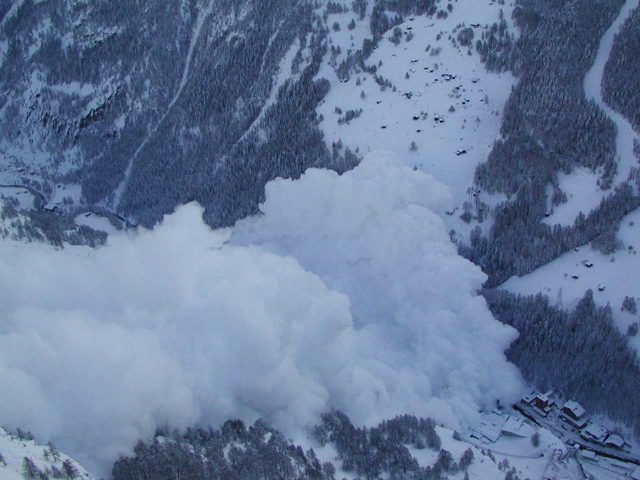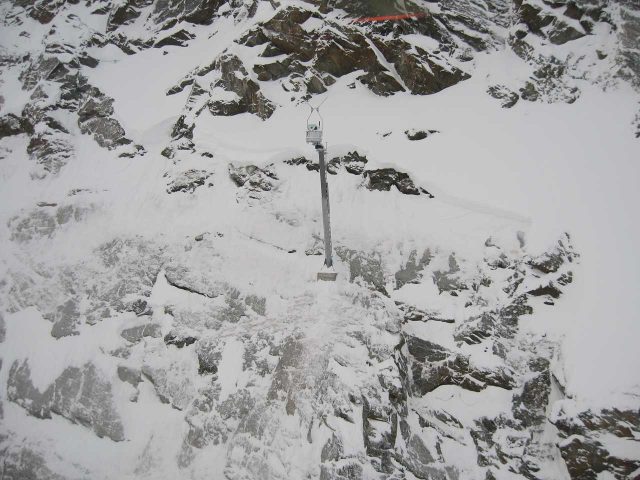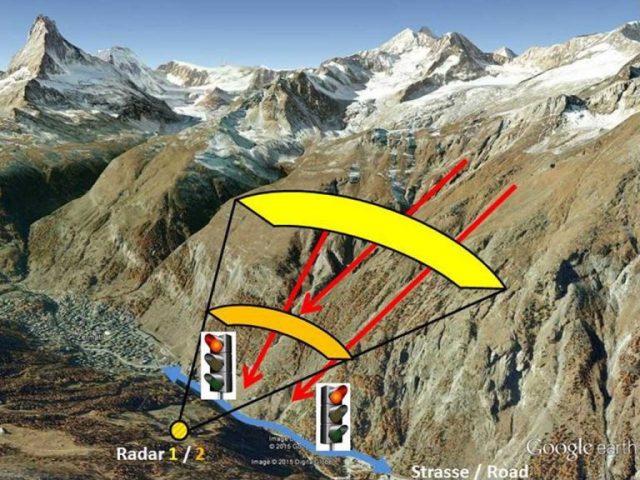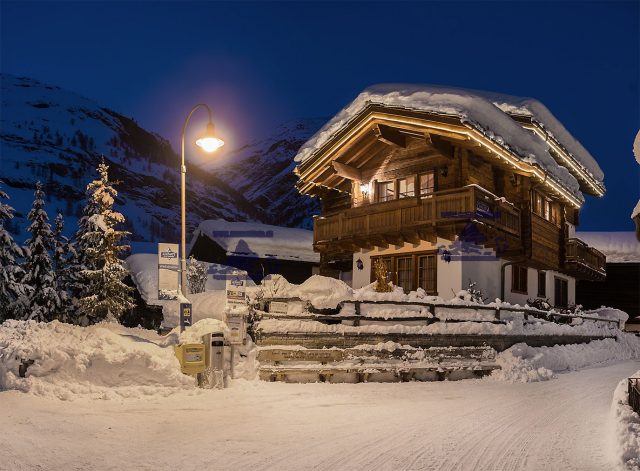If you want to live in the mountains you need to recognise the potential danger from avalanches. In the Matterhorn valley there is a constant danger that needs to be accounted for.
In the communities from Stalden to Zermatt there is an avalanche team made up of two local observers who constantly monitor the mountain, as well as an avalanche crisis team, in case of a serious event.
In addition, there is also a ‘roadmaster’ responsible for assessing danger to the access road to Zermatt and ‘railmaster’ who has a similar role for the rail link from Andermatt.

(c) Bruno Jelk
“We assess the avalanche danger every day…”
According to the chief observer, Bruno Jelk:
“We assess the avalanche danger every day and forward our data each morning at 07.00am. The biggest threat comes after at least 20-30cm of fresh snow, especially when it’s warmer in spring.”
If Jelk and his deputy Anthamatten Stefan assess that the risk has become too great, then this is when safety blasting will take place.
When this happens, the road, rail and lift connections have to be temporarily closed, depending on the location of the explosions.

(c) Bruno Jelk
Types of Avalanche Blasting in Zermatt
- Helicopter Blasting
Blasting by helicopter is only possible in good flying conditions. The disadvantage of these type of blasts is that it’s hard to control the size of the avalanche.
- Explosive Masts
An alternative method is to use the fixed Wyssen pylons to drop dynamite. These can be used in any weather conditions and as a complement to helicopter blasting.

Wyssen avalanche mast
Avalanche Radar Detection
As regular visitors to our blog will know, Zermatt also uses an avalanche radar detection system. The system has been described by Geopravent, who created it, as similar the radar systems that track speeding cars.
In the event of an avalanche, the barriers on the Zermatt-Tasch road are automatically closed and the traffic lights turn red. Jelk and the avalanche team are alerted via SMS and telephone.
The danger zone has to be checked to see that it’s clear, with guard posts set up before any blasting, so that no one goes to the closed area.
They then analyse the radar data and depending on the avalanche size and weather conditions the road can be manually re-opened.

Radar detection system
Keeping Zermatt safe
All of these measures are designed to keep holidaymakers in Zermatt as safe as possible, so you can focus on enjoying your holiday.
If you would like to visit Zermatt and stay in a serviced chalet or self-catering apartment, then please contact the Matterhorn Chalets team.

Chalet Ulysse